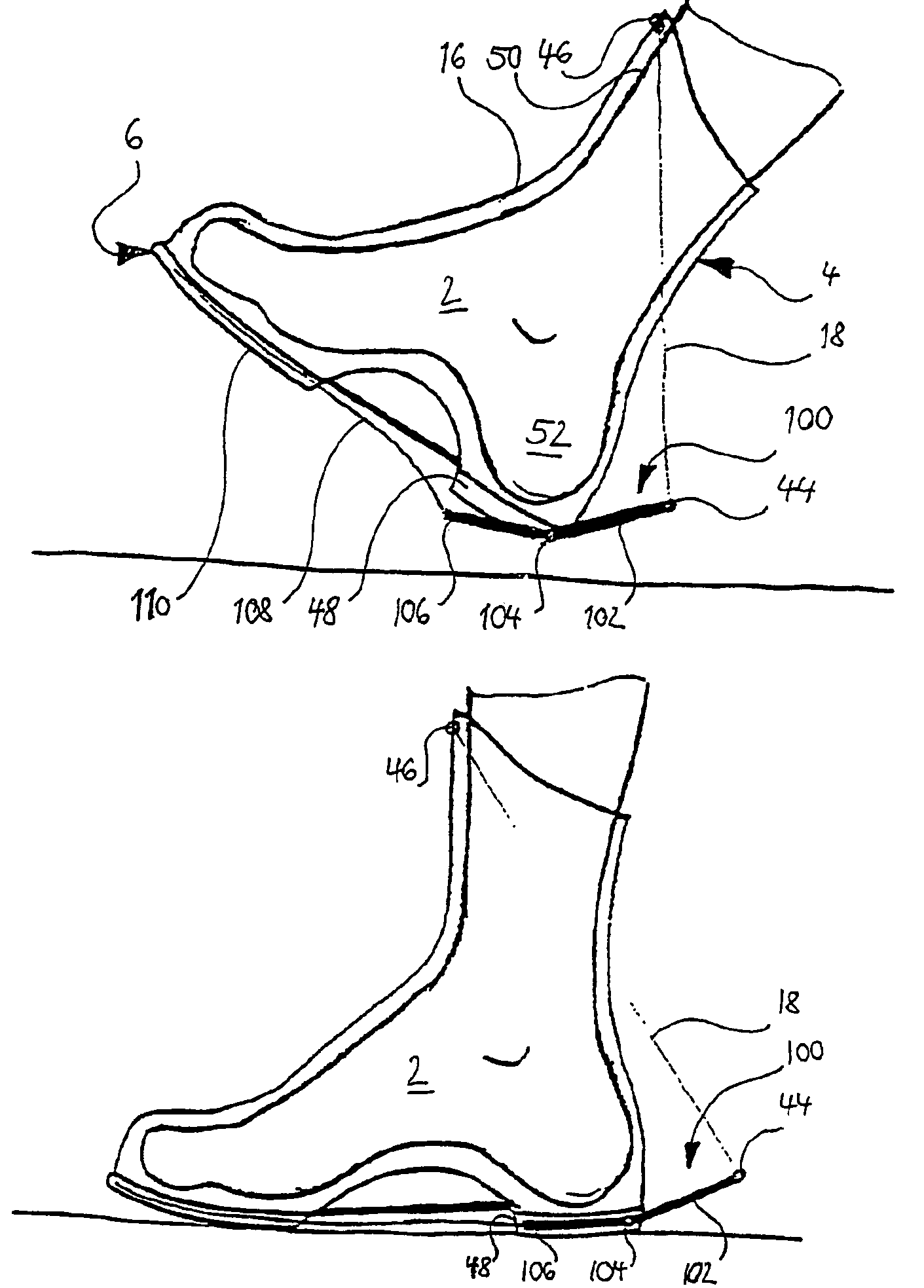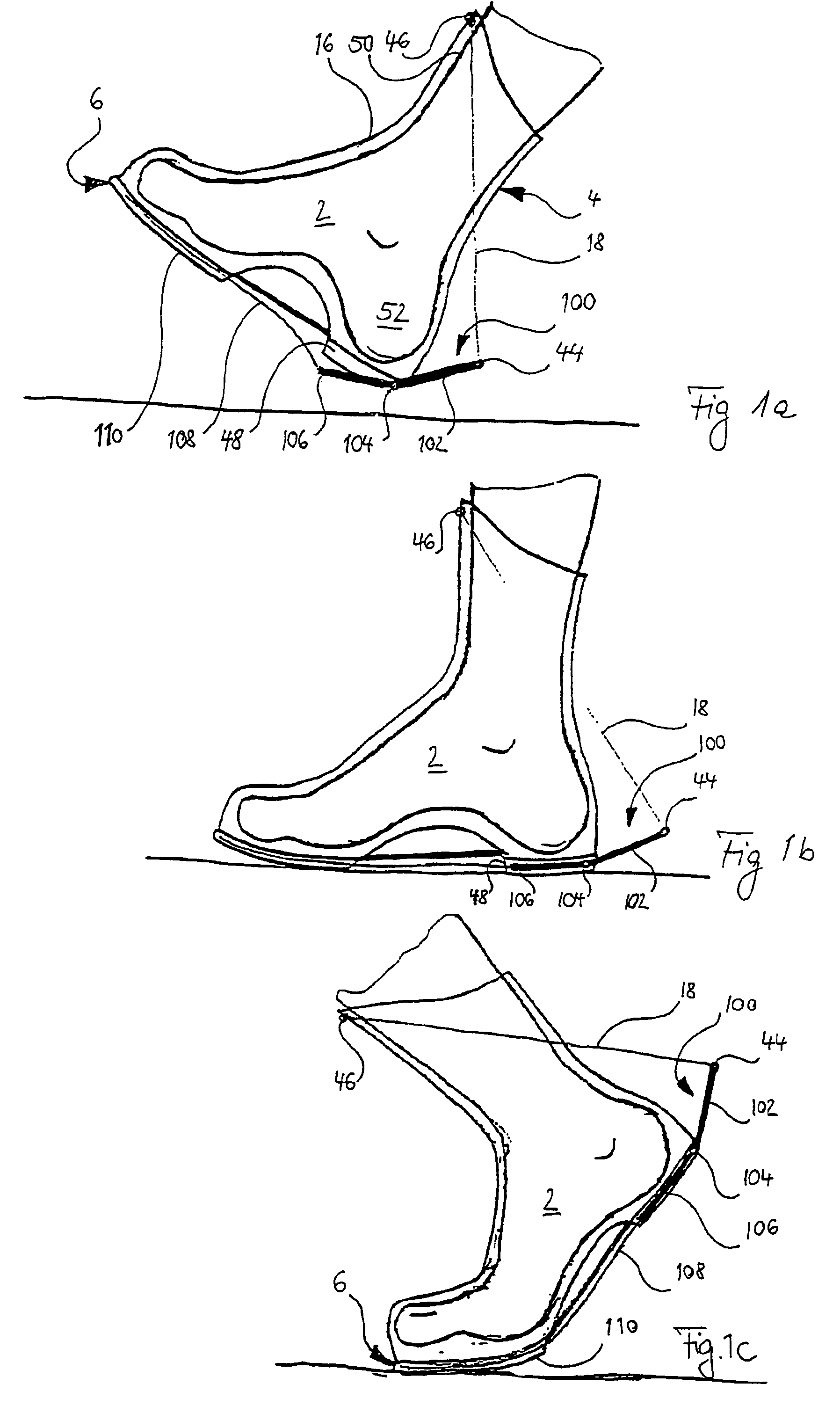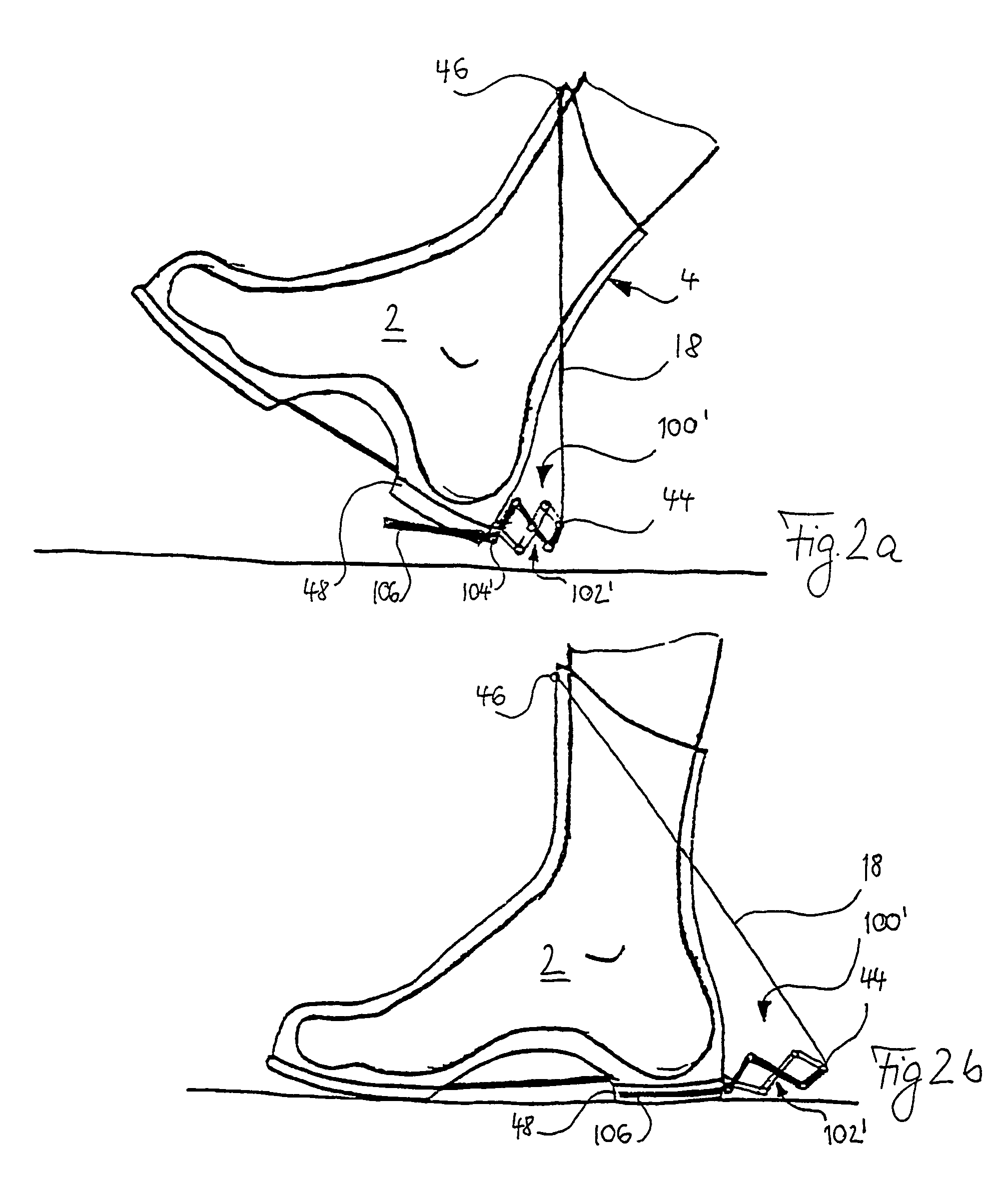Shoe with energy storage and delivery device
a technology of energy storage and delivery device, applied in the field of shoes, can solve the problems of stressing of long cross-articulation tendons and muscle structures, affecting the performance of the shoe, and the efficiency of the shoe is low, so as to improve the surface grip and impact damping, and improve the surface grip profile corrugation
- Summary
- Abstract
- Description
- Claims
- Application Information
AI Technical Summary
Benefits of technology
Problems solved by technology
Method used
Image
Examples
Embodiment Construction
[0039]While this invention may be embodied in many different forms, there are described in detail herein a specific preferred embodiment of the invention. This description is an exemplification of the principles of the invention and is not intended to limit the invention to the particular embodiment illustrated
[0040]FIG. 1 represents a first embodiment of the invention, wherein a base spring element 18 is arranged between the ends 44, 46 of a support element 16, which is integrated into the external shell of the shoe 4. The base spring element 18 and the support element 16 run from a first appendage 44 at the heel zone 48 or the sole 6 to a second appendage 46, which rests on the front edge of the shin bone 50 (represented only extremely diagrammatically). The support element and the osseous support of the lower leg and foot skeletal elements 50, 52, which represents an osseous bridge between the upper end point 46 of the base spring element 18 and the lower end point 44, co-operate...
PUM
 Login to View More
Login to View More Abstract
Description
Claims
Application Information
 Login to View More
Login to View More - R&D
- Intellectual Property
- Life Sciences
- Materials
- Tech Scout
- Unparalleled Data Quality
- Higher Quality Content
- 60% Fewer Hallucinations
Browse by: Latest US Patents, China's latest patents, Technical Efficacy Thesaurus, Application Domain, Technology Topic, Popular Technical Reports.
© 2025 PatSnap. All rights reserved.Legal|Privacy policy|Modern Slavery Act Transparency Statement|Sitemap|About US| Contact US: help@patsnap.com



